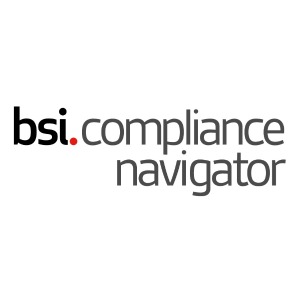BSI Compliance Navigator Bi-weekly Blog: Discussion - The EU Product Liability Directive and its relationship with the MDR and IVDR

What is the Product Liability Directive and why it is important
The Medical Device Regulation (MDR) and the In Vitro Diagnostic Regulation (IVDR) reference several other directives and regulations. One such directive is the Product Liability Directive (PLD) [1]. Published in 1985, the PLD is a well-established mechanism for ensuring that manufacturers shall be liable for damage caused by a defect in their product. There are two important updates currently under consideration within the EU that could impact medical device manufacturers and patients alike.
Compensation Measures
How does the PLD affect the MDR/IVDR? The recitals note that manufacturers should have measures in place to provide sufficient financial coverage for their potential liability, proportionate to the risk class, type of device and the size of enterprise. This introduces the concept of “defective device”, to which any compensation might apply[2].
Whilst the MDR and IVDR do not provide a definition for “defective device”, the PLD states that:
“A product is defective when it does not provide the safety which a person is entitled to expect, taking all circumstances into account, including:
(a) The presentation of the product
(b) The use to which it could reasonably be expected that the product would be put
(c) The time when the product was put into circulation[3]”
Meanwhile, the General Obligations of Manufacturers[4] in Article 10 of the MDR & IVDR note that:
“Natural or legal persons may claim compensation for damage caused by a defective device in accordance with applicable Union and national law.
Manufacturers shall, in a manner that is proportionate to the risk class, type of device and the size of the enterprise, have measures in place to provide sufficient financial coverage in respect of their potential liability under Directive 85/374/EEC, without prejudice to more protective measures under national law.”
As such, to be compliant the manufacturer must either have sufficient funds ring-fenced for this purpose or take out suitable liability insurance. This point could be raised during a Notified Body audit. But how much is enough?
Proportionality
Many requirements of the regulations are qualified with the words “proportionate to the risk class and type of device”. In this context, the scale of claims for compensation is surely more likely to be related to the extent of the damage suffered by the person making the claim. If a patient dies due to their crutches breaking, causing them to hit their head on the ground, then the compensation claim will likely be greater in value than if they had suffered a broken arm.
Furthermore, while it is not completely clear, presumably the size of the enterprise relates to the type of measures put in place, as described above, rather than the extent of the actual measures themselves.
Authorised Representatives Responsibilities
According to Article 11 of MDR /IVDR, Authorised Representatives (ARs) appointed by manufacturers whose place of business is established outside the EU, should also be aware of the extent of their potential liabilities:
“Without prejudice to paragraph 4 of this Article, where the manufacturer is not established in a Member State and has not complied with the obligations laid down in Article 10, the authorised representative shall be legally liable for defective devices on the same basis as, and jointly and severally with, the manufacturer.[5]”
ARs are clearly implicated in any claims for defective devices. It would be prudent for ARs to similarly protect themselves with sufficient financial coverage.
Pending Updates
Proposals under consideration for amendment to the PLD, along with a new complimentary directive, seek to update existing product liability rules as follows:
•Extending definitions of products to include:
- Substantially modified products
- Software
- Products containing artificial intelligence (AI)
•Increased clarity on the liability of all economic operators involved in any aspect of making products available in the EU market
•Existing limits on the amounts of compensation for defective products to be scrapped
•Manufacturers will have to disclose all evidence that a claimant might need to be able prove their case in court
Recommendations
Both manufacturers and ARs alike should set up and maintain internal processes for ensuring that adequate financial coverage for compensation is accounted for within the business. Such a process could include a monitoring period to ensure that the financial coverage in place remains appropriate to cover any extension of product ranges taken on or developed within the company over time.
These processes should also ensure that the Public Liability Regulation is included in any controlled list of relevant external documents so that when these are revised or added to the list, the organisation is alerted in order to fully understand the impact on their business.
[1] Product Liability Directive 85/374/EEC.
[2] Recitals 31 (30) in MDR (IVDR).
[3] PLD Article 6.
[4] MDR/IVDR Article 10.16 (10.15) [emphasis added].
[5] MDR/IVDR Article 11.5 [emphasis added].
The Compliance Navigator blog is issued for information only. It does not constitute an official or agreed position of BSI Standards Ltd or of the BSI Notified Body. The views expressed are entirely those of the authors.
Follow our blog for free to get the latest update in the Medical Devices Market.
Read our latest blog posts here.





















